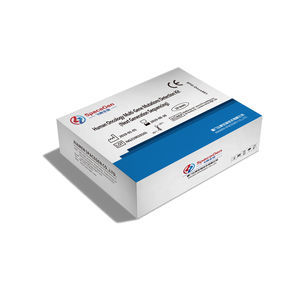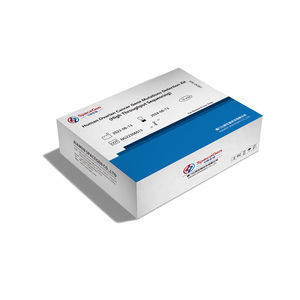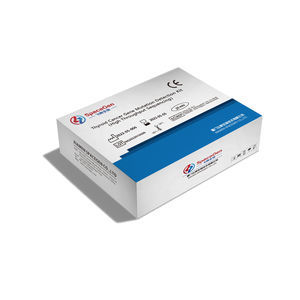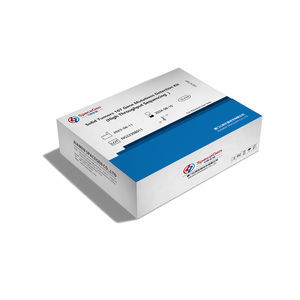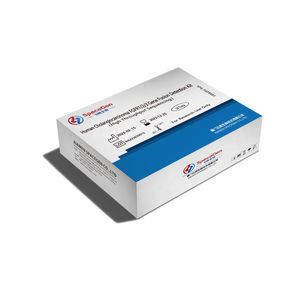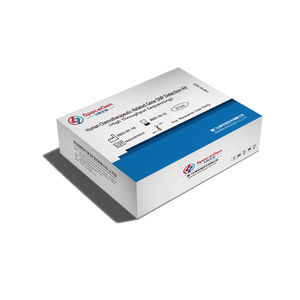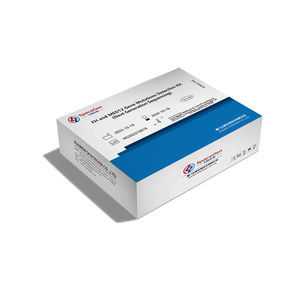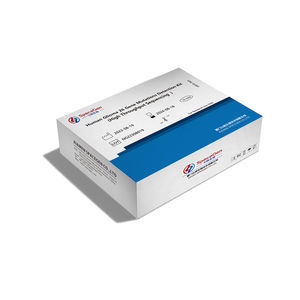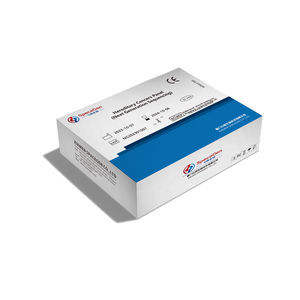

- Company
- Products
- Catalogs
- News & Trends
- Exhibitions
Research detection kit Lucksen®for BRAF mutationsBRCA1 geneBRCA2 gene
Add to favorites
Compare this product
Characteristics
- Applications
- for research
- Tested parameter
- for BRAF mutations, BRCA1 gene, BRCA2 gene, for TP53 gene, lead
- Sample type
- whole blood, clinical, tissue
Description
Homologous Recombination Deficiency (HRD) typically refers to a cellular-level impairment in homologous recombination repair (HRR) functionality. This condition can result from various factors, including germline mutations in HRR-related genes, somatic mutations, and epigenetic inactivation [1]. TCGA studies suggest that approximately half of high-grade serous ovarian cancer (HGSOC) may exhibit HRD, but only about 20% of patients carry pathogenic BRCA1/2 mutations. HRD can also result from other factors such as BRCA1 methylation and mutations in other HRR genes [2].
HRD can lead to specific, quantifiable, and stable genomic alterations. Loss of Heterogeneity (LOH), Telomeric Allelic Imbalance (TAI), and Large-scale State Transitions (LST), are used as indicators of Genomic Scar. The unweighted sum of these markers is used as an HRD score [3]. Combining pathogenic mutations in BRCA1/2 with the HRD score can nearly double the population benefiting from testing compared to testing for BRCA1/2 gene mutations alone.
HRD STATUS INDICATES EFFICACY OF PARP INHIBITORS
Clinical testing for HRD has significant application value in predicting the efficacy of PARP inhibitors in the treatment of advanced ovarian cancer. It can stratify ovarian cancer patients, optimize treatment decisions, and maximize the clinical benefit of PARP inhibitors. Furthermore, in breast cancer, pancreatic cancer, and prostate cancer, HRD testing may also have potential guidance value for the clinical use of PARP inhibitors or platinum compounds [1].
Catalogs
No catalogs are available for this product.
See all of SPACEGEN‘s catalogsRelated Searches
- Assay kit
- Blood assay kit
- Immunoassay assay kit
- Plasma assay kit
- Infectious disease detection kit
- Analysis software
- Molecular test kit
- Respiratory infection test kit
- Whole blood detection kit
- Optical assay kit
- Clinical assay kit
- Fluorescence assay kit
- Viewer software
- Real-time PCR test kit
- Research assay kit
- Laboratory software
- Windows software
- Laboratory detection kit
- Cell assay kit
- Oncology test kit
*Prices are pre-tax. They exclude delivery charges and customs duties and do not include additional charges for installation or activation options. Prices are indicative only and may vary by country, with changes to the cost of raw materials and exchange rates.

